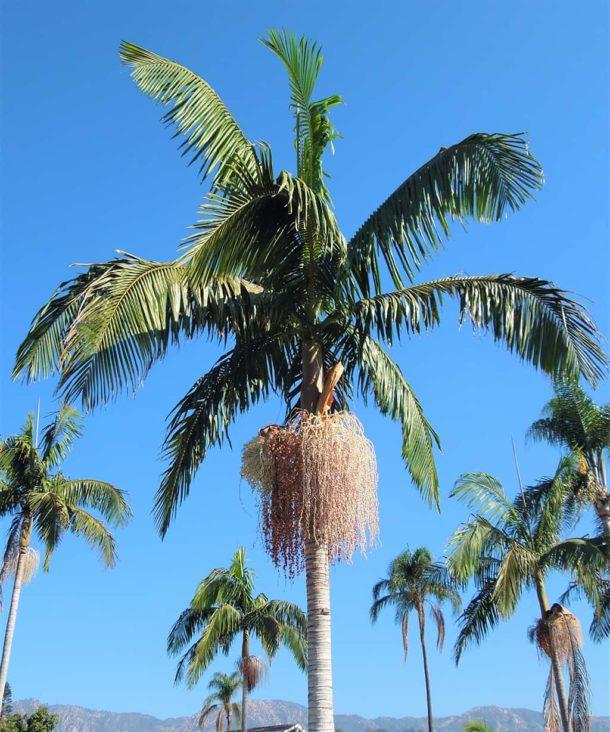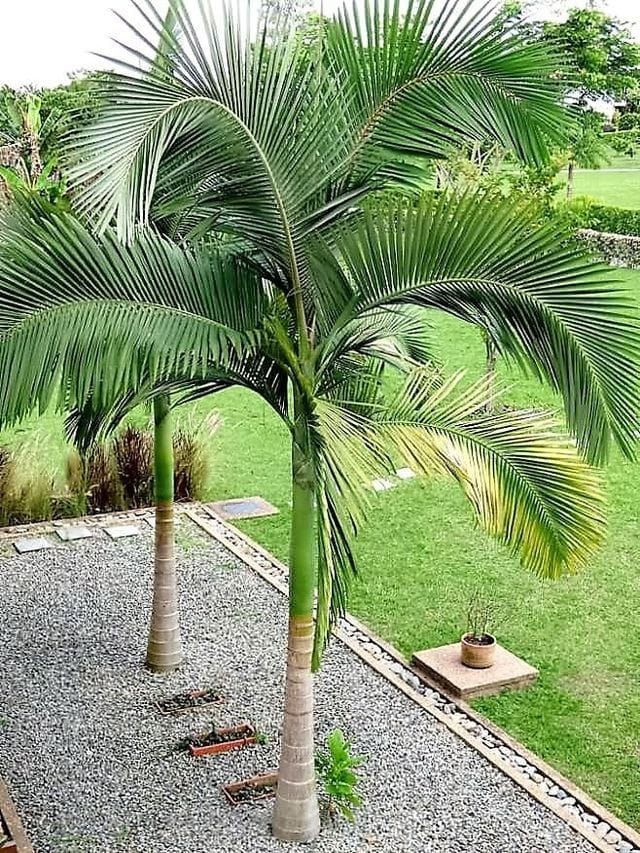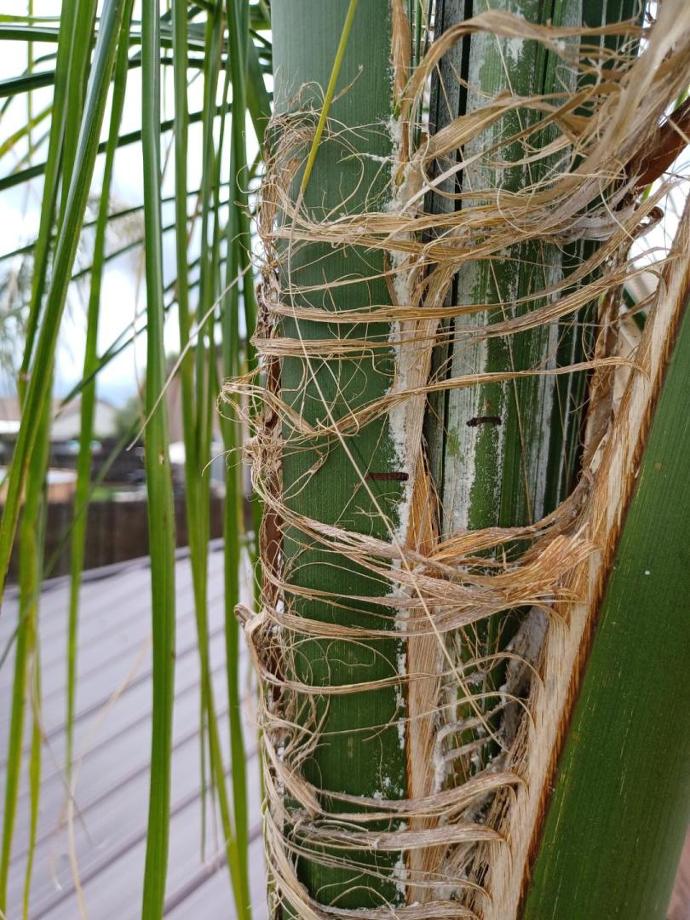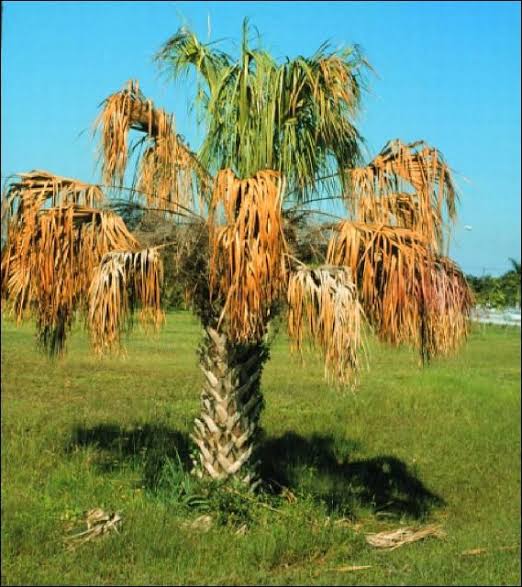King Palm Plant
King Palm, also known as Archontophoenix cunninghamiana, is an outdoor palm tree. Plant in well-draining soil with partial shade to full sun exposure. Water consistently, and fertilize during the growing season. Pruning can be done to remove old or damaged fronds.

Habit
Palm
Height
6 to 10 m
Growth
Moderate
Soil
Well-drained, Sandy Loam
Shade
Full Sun to partial shade
Moisture
Moist
Edible
No
Medicinal
No
Origin
Australia
Climatic Condition
Tropical, Subtropical
Temperature (°)
20°C to 30°C
Humidity (%)
60% to 70%
Potting media
50% Loam, 30% Sand, 20% Organic Matter
Fertilizers
Organic Fertilizer
Watering
Regular watering
Plant Weight
10 to 15 kg
Flowering Time
Spring to Summer
Soil Ph level
6.0 to 7.5
Water Ph level
6.0 to 7.0
Soil EC
0.6 to 1.2 mS/cm
Yield Per Plant
25 to 35 kg per plant
NPK ratio
14:14:14 or 8 :10 :10
life Span
20 to 30 year
Health Benefits
Ornamental, Air-purifying
Suggested Grow Media or Potting Mix ?
50% loamy soil, 30% compost, 20% sand
Suggested Fertigation/Fertilizers
Fertilize every 4 weeks with a balanced fertilizer.
Common Diseases and Remedies
Ganoderma butt rot, Fusarium wilt , lethal yellowing.
Wilting, drooping, eventual death of fronds, conks, mushroom like structures at the base of the trunk. Yellowing, vascular discoloration in the trunk.
Regular respiration, proper watering, good soil drainage, avoid over watering.
HEALTH BENEFITS
No known medicinal uses, but it improves air quality.
What Is An King Palm Tree ?
Royal Palm is a type of palm tree native to Australia. Its graceful appearance, rapid growth rate, and relatively low maintenance make it a popular choice for landscaping in tropical and subtropical regions. Royal palms typically have slender trunks with feathery leaves at the top, forming a lush crown. Due to its aesthetic appeal, it is often used in parks, gardens, and along streets.

What Are The Different Types Of King Palm Plants?
1. Archontophoenix cunninghamiana
The most common species, also called picabean palm or bungalow palm.
2. Archontophoenix alexandrae
Alexandra Palm or King it is also called Alexander His Palm.
3. Archontophoenix maxima
This species, known as the Mount Lewis Royal Palm, is native to the Mount Lewis region of Queensland, Australia.
4. Archontophoenix purpurea
Also known as Purple Royal Palm, this variety has purple leaves and stems.
5. Archontophoenix tuckeri
A rare species found on the Cape York Peninsula in Queensland, Australia.

How to Care King Palm Tree ?
1. Location
King palms grow in tropical and subtropical climates. It prefers warm, moist conditions and is suitable for growing in USDA hardiness zones 10 and 11. These zones typically include areas with mild winters and hot summers. Royal palms require well-drained soil and prefer to be planted in full or partial sun.
2. Sunshine
King Palms require plenty of sunlight to grow, preferably in full to partial sun. In its natural habitat, it grows under the canopy of tall trees and receives filtered sunlight. Mimicking this environment in your landscape will ensure optimal growth for your royal palm. An area with hot, intense sunlight that provides shade during the hottest hours of the day.
3. Soil
King Palm grows in well-drained soil that is rich in organic matter. A loamy soil mixture that combines sand, silt and clay is suitable for these palm trees. This type of soil provides good drainage while retaining moisture and nutrients important for healthy growth. It is important to avoid compacted soils or soils that are prone to waterlogging, as this can lead to root rot and other problems.
4. Hydration
Although these palm trees require constant moisture, it is important to avoid overwatering, which can cause root rot. Water thoroughly so that the water reaches the roots. Check soil moisture and water regularly if the top layer feels dry. Adjust watering frequency based on factors such as climate and soil type.

5. Nourishment
King palm care with proper fertilization is essential to promote healthy growth and lush foliage. Choose a balanced fertilizer specifically formulated for palm trees and apply according to the manufacturer's instructions. Royal palms are usually fertilized during the growing season (spring and summer) to support active growth.
6. Issues
Common problems include pests such as scale insects and spider mites that attack leaves and stems. Regular inspection and proper treatment with insecticidal soaps and horticultural oils can help effectively prevent this infestation. In addition, fungal diseases such as bud rot and root rot can occur, especially in poorly drained soils.
What are the Benefits of King Palm ?
With its graceful appearance and lush foliage, king palm trees add tropical beauty to landscapes, gardens, and cityscapes, enhancing their overall visual appeal . Like other plants, king Palm purifies the air by absorbing carbon dioxide and releasing oxygen, contributing to a healthier environment. King palm canopies provide shade, lowering ambient temperatures and creating a cooling microclimate, especially in hot climates. The dense foliage of royal palms provides shelter and nesting sites for birds, insects, and other wildlife, contributing to biodiversity in urban and suburban areas. Planting King Palm in rows or groups can act as effective privacy screens, creating natural barriers between sites or blocking unwanted views.

FAQs About Growing King Palm
1. How tall is a King palm ?
A mature King palm can reach a height of 40 to 60 feet, depending on environmental conditions and care.
2. Do King palms need to be pruned ?
Yes, King palms benefit from occasional pruning to remove dead, damaged, or diseased leaves.
3. Is King Palm drought tolerant ?
King Palm prefers constantly moist soil, but once established it will tolerate short periods of drought.
4. Can King Palm grow indoors ?
King Palm is primarily an outdoor plant and requires plenty of sunlight and space to grow.
5. Does King Palm attract pests ?
King Palm palms can attract pests such as scale insects, spider mites, and palm aphids.


